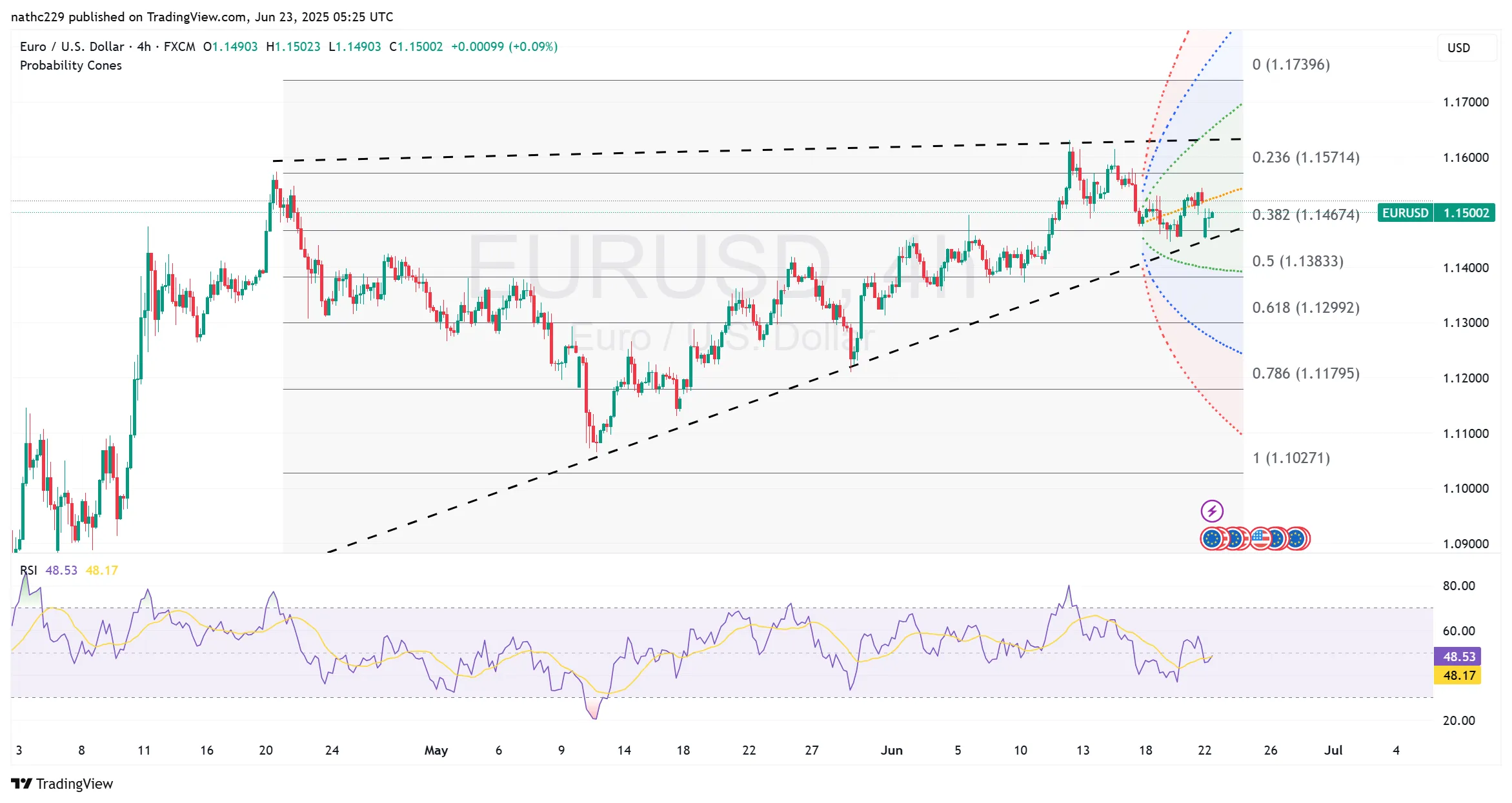
EUR/USD Struggles for Direction Amid Heavy Option Expiries and Geopolitical Tensions
EUR/USD Struggles for Direction Amid Heavy Option Expiries and Geopolitical Tensions
EUR/USD continues to trade indecisively, reflecting a broader stagnation across EUR crosses in Asia. Despite heightened geopolitical tensions following recent U.S. military action against Iran, the euro has shown limited reaction, indicating market participants’ cautious positioning and mixed technical indicators ahead of substantial option expiries.
Technical Analysis
EUR/USD traded within a narrow range of 1.1452–1.1507 in the Asian session on EBS, displaying modest fluctuations after an initial move lower. Price action remains confined between Thursday’s low at 1.1447 and Friday’s high at 1.1544, signaling consolidation and indecision in the near-term direction.
Immediate technical resistance is defined clearly at the descending 100-hour moving average (1.1503), closely followed by the 200-hour moving average positioned at 1.1515. A decisive break above these moving averages could potentially trigger renewed bullish momentum toward Friday’s high of 1.1544 and beyond.
On the downside, critical support remains at 1.1447, with substantial option expiries around this level, notably EUR 2.2 billion between 1.1440 and 1.1490. The significant size of these expiries is likely providing a gravitational pull, helping to contain volatility and movements in EUR/USD for now. Additional large option expiries at 1.1400 (EUR 1.1 billion) and at 1.1545–1.1550 (EUR 1.9 billion) and 1.1600 ($1.1 billion) further emphasize the constraints on EUR/USD volatility and directionality.
Momentum indicators, including RSI and MACD, currently exhibit neutral to mildly bearish signals, reinforcing the view of continued range-bound trading until clearer market catalysts emerge.
Geopolitical and Market Factors
Recent geopolitical developments, particularly the U.S. military strike against Iran’s primary nuclear facilities, have escalated tensions globally. However, the euro has been relatively unresponsive, suggesting markets do not view Europe as severely impacted by these developments compared to other regions, notably due to Europe’s comparatively lower dependency on Middle Eastern geopolitical stability.
Market sentiment appears cautious, reflecting uncertainty about potential escalations. Traders remain wary, closely monitoring any developments that could significantly shift risk sentiment and currency market dynamics.
Economic Indicators and Central Bank Activity
The upcoming week presents substantial economic indicators and central bank activity likely to influence EUR/USD volatility significantly. Key data releases include the flash June Purchasing Managers’ Indexes (PMIs) across major economies, U.S. core PCE price index, consumer confidence figures, and comprehensive housing market data.
The U.S. Federal Reserve remains in the spotlight, with Chair Jerome Powell and several Fed officials scheduled to speak throughout the week. These speeches are crucial for assessing the Fed’s economic outlook following its recent policy meeting, providing potential directional catalysts for EUR/USD.
In Europe, ECB President Christine Lagarde’s testimony at the European Parliament will be closely scrutinized for insights into the central bank’s monetary policy stance amid ongoing inflation concerns and economic uncertainties.
